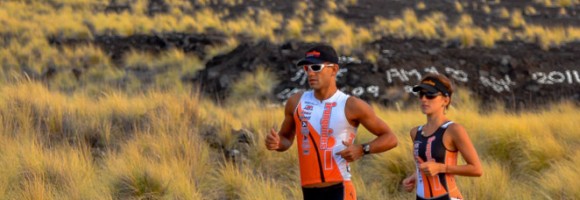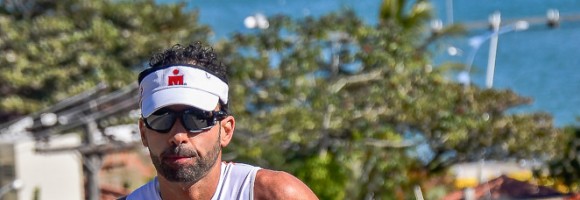Ironman is a very demanding sport and challenge for all who take part, that in itself is the beauty and attraction of the sport. We all make a lot of sacrifices for training both in terms of time away from family and friends to the actual cost of equipment and events and the weight of all these things can come crashing down on us if something goes wrong before an event or even worse during the event itself. Think we have all heard about the post Ironman blues but this depression is magnified when something goes wrong and prevents us doing as planned on race day.
We spend a lot of time and energy training and planning for success, but I think it’s very important that athletes have a strategy in place to cope with failure or obstacles that may arise in be lead up or on race day.
Illness
One of the biggest obstacles we have as athletes and Ironman is illness, our immune systems can be compromised with all the training and it is usually when we ease off training that illness comes out – the amount of athletes who become ill during race taper is huge. So what can you do when illness hits in the days before a race?
Firstly stay calm, stressing out is only going to make the situation worse and prolong the illness. Speak to your coach as adapting your training plan at this time will ensure your immune system has more chance to recover and a coach can make sure appropriate sessions are given to keep muscles switched on while not stressing the system too much! An example of this can be seen with the following sessions
SWIM
Panned session
200 easy – 5×200 moderate on 3min – 200 easy
Adapted session
200 easy – 3×200 pull / paddles on 4min – 200 easy
In the adapted session by adding in use of the pull buoy and paddles we place a little more emphasis on strength and reduce the cardio stress, heart rate will be lower and breathing under control but the muscles will still get the same training effect. Longer recoveries in the set ensure heart rate stays lower and does not drift up during the session.
Following the session you will feel you have worked the muscles but will not feel fatigued and drained as during a normal session undertaken while sick.
We can apply this in a similar way to a bike session, for example if we had some 3min hard intervals to do that would be quite hard for the body when sick we want to look at hitting the same system and have the muscles work but we can reduce the time to stop the level of stress. So for example we may work on 40second hard with 2.20 easy between – we still get the muscles worked but the shorter interval will keep heart rate low and the long recoveries will stop heart rate drifting up.
Mechanical issues – travel related?
Another issue that often comes up to throw a spanner in the works is a mechanical issue with bikes, this is extremely common when travelling on planes or cars as we normally do when racing. Triathlon bikes can be very expensive and have specialty parts due to brand designs, if you have a bike that requires specialty parts and bolts for things such as stems, seat post or saddles then make sure you order spares to travel with – it’s a horrible feeling to get to your race with a $10000 bike and not be able to race because you do not have a $10 screw to replace a broken part.
Sometimes though the bike may not be repairable or not turn up at the airport with your bags, this does happen a lot more than you think. Position on your bike is very important and just a small change from your position will affect not only your biking but how you run off the bike – so make sure you have all your measurements written down in case the worst comes to the worst and you have to hire a bike at the event.
Having taken care of everything you can there is still the possibility of something actually going wrong during the race that can end your day, this is something we can’t prevent or really plan for but is just a reality when we are reliant on equipment and not just our selves to get through the race, a flat tire, broken wheel, snapped seat post bolt are just a few examples. Also crashes do happen on the bike and again these can be totally out of our control.
When something happens during the day that means you can’t finish the event it will feel devastating at the time but if we know it can happen and have strategies in mind for it we can cope a lot better. I think we see this a lot with pro athletes as they have to cope with failure a lot more often, picking yourself up and just getting on with it just becomes part of life for a pro. I think you learn quickly that brooding does not solve anything and just makes you and all around you miserable. Just think about kids learning to ride a bike. When they crash we make sure they get straight back on a get going and they learn very quickly this way, we need to take e same mindset and get back on and get going with life! One of my favourite sayings is TURN THE PAGE – no matter how bad we have to just turn the page and start a fresh!
If we have trained for an Ironman and something has prevented the race being completed use your fitness, find another event even if a small local event or just get a group of friends together and do your own training race to get closure from all the hard work you have done!
Always remember tomorrow is a new day and we can always start a fresh wherever we may be!
Enjoy your training
Alun “Woody” Woodward
ironguides is the leading Lifestyle Facilitation company for athletes of all abilities. We provide coaching and training services, plans and programs, as well training education, health and fitness products to help you learn and live a healthy lifestyle. Come get fit with one of our monthly training subscriptions, event-specific training plans, coaching services, or a triathlon training camp in an exotic location! ironguides also provides Corporate Health services including Corporate Triathlons, Healthy Living retreats and speaking engagements. At ironguides, your best is our business!
Train with ironguides!
Personalized Online Coaching: Starting at USD190/month
Monthly Training plans (for all levels, or focused on one discipline): Only USD39/months
Event based training plans:
Sprint Distance (USD45 for 8-week plan)
Olympic Distance (USD65 for 12 week plan)
Half Ironman (R$95 for 16-week plan)
Ironman (USD145 for 20-week plan)
X-Terra (USD65 for 12-week plan)
Running Plans (10k, 21k and 42k – starting at USD40)




Recent Comments